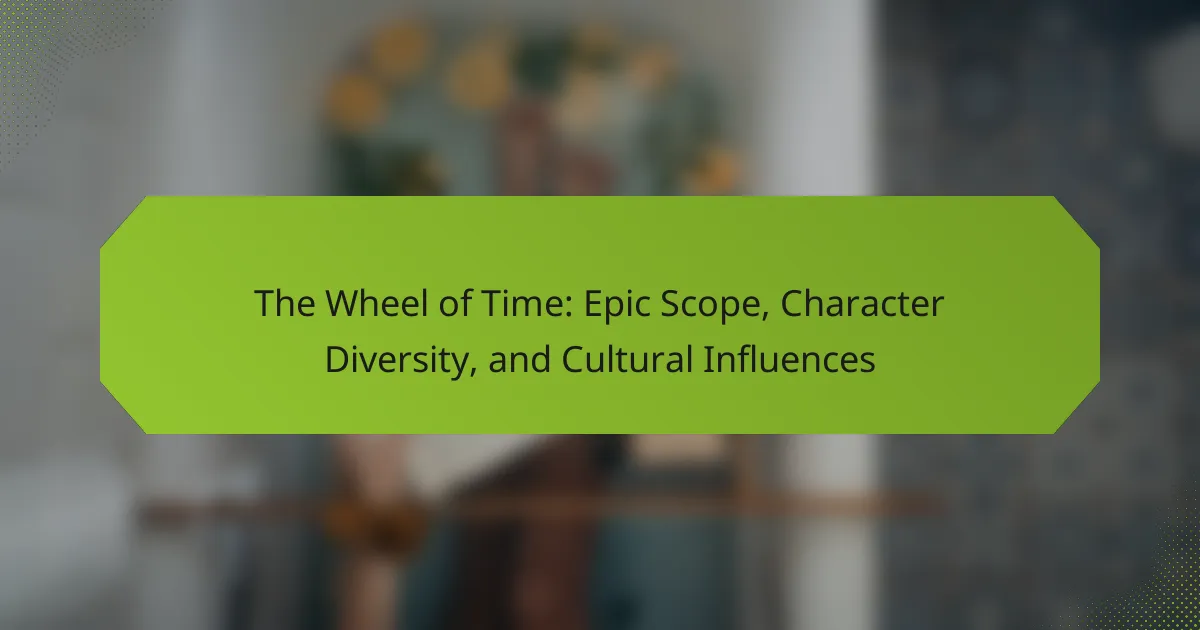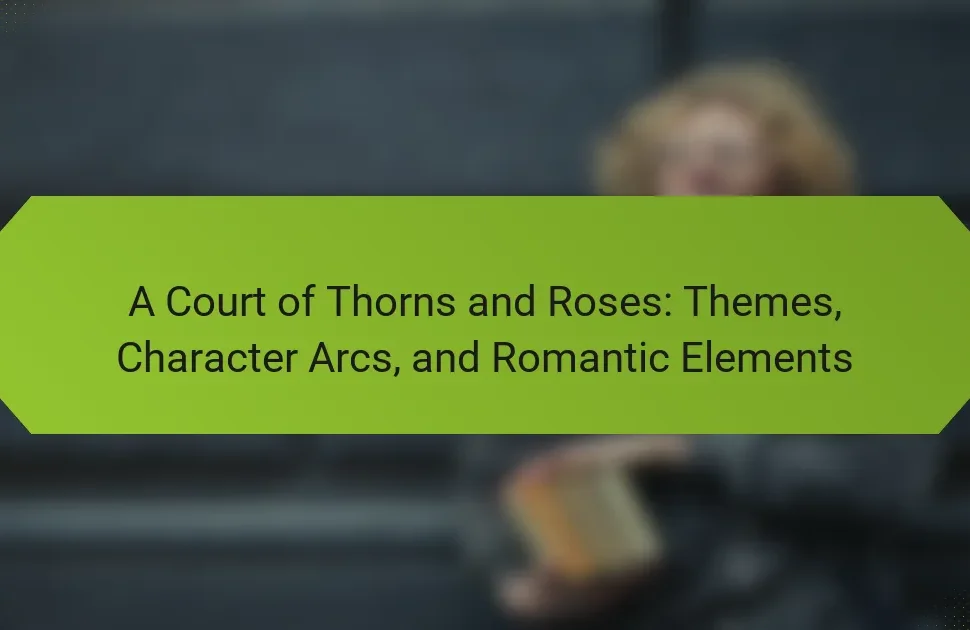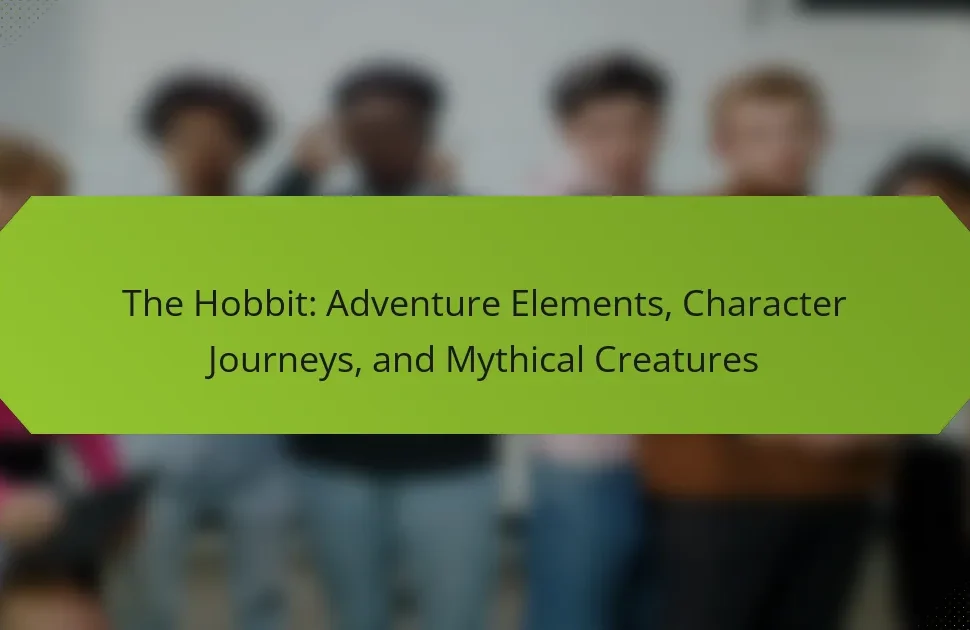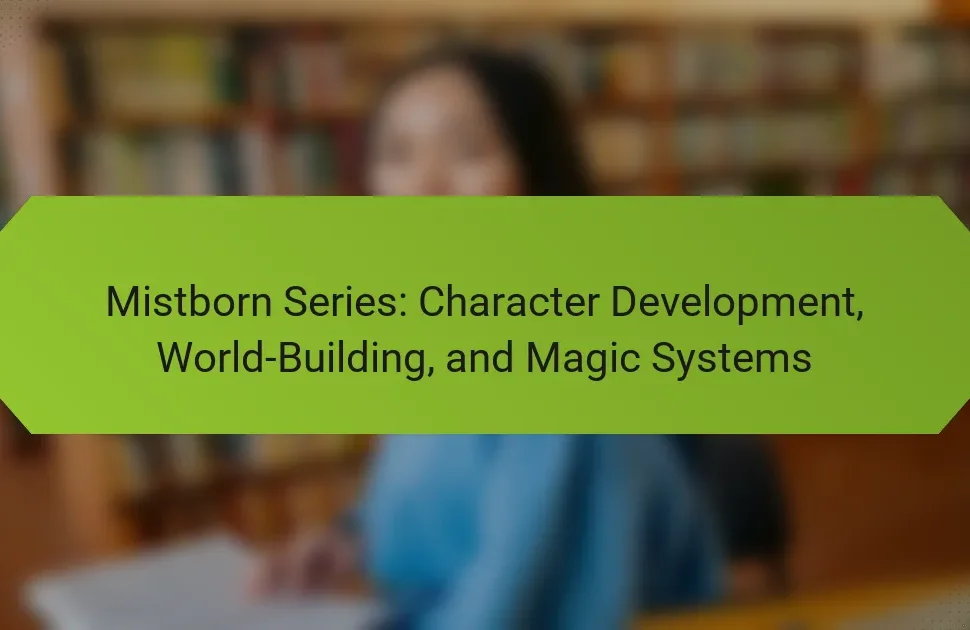The Wheel of Time captivates readers with its epic narrative scope, diverse characters, and rich cultural influences. It showcases intricate world-building, explores deep themes of destiny and free will, and highlights a complex magic system. The series features characters from various backgrounds, each contributing unique perspectives and motivations. Additionally, cultural influences shape the narrative, reflecting real-world social dynamics and historical conflicts.
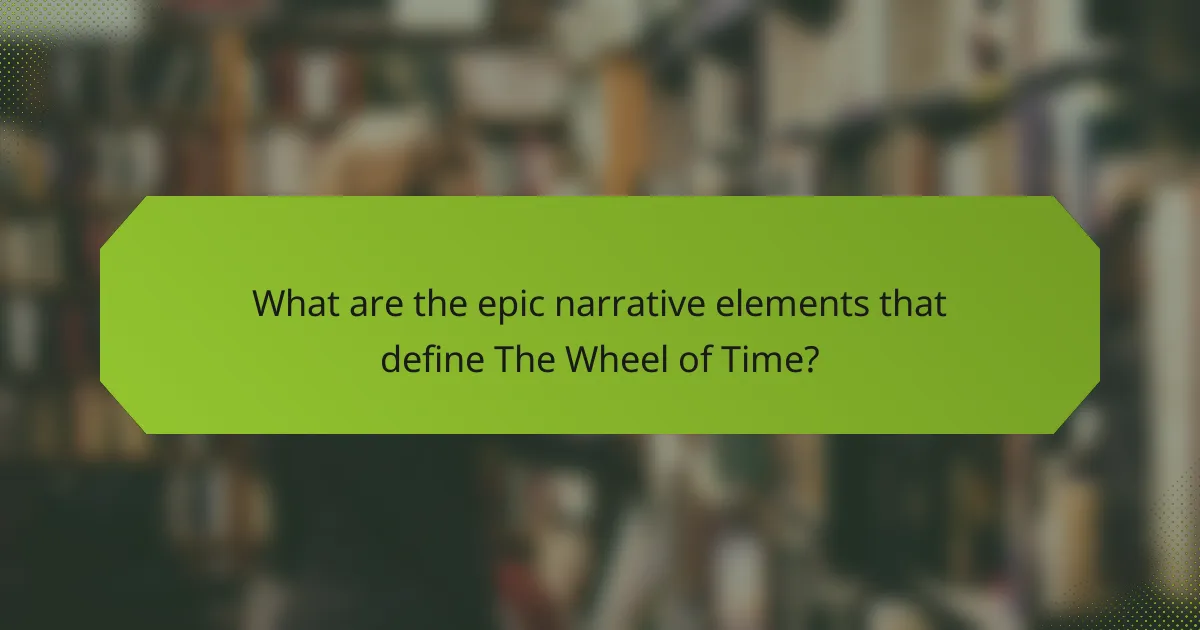
What are the epic narrative elements that define The Wheel of Time?
The Wheel of Time features epic narrative elements such as vast world-building, diverse character arcs, and rich cultural influences. This series spans multiple cultures, showcasing unique attributes like the intricate magic system and the struggle between light and darkness. The character diversity enhances the storytelling, with protagonists from various backgrounds and motivations. The expansive scope allows for deep exploration of themes like destiny and free will, making it a seminal work in the fantasy genre.
How does the series structure its expansive world-building?
The series structures its expansive world-building through intricate character arcs and diverse cultural influences. Each nation within “The Wheel of Time” has unique customs, languages, and histories that enrich the narrative. The depth of character diversity enhances the portrayal of these cultures, allowing for complex interactions and conflicts. Furthermore, the series employs a detailed magic system, known as the One Power, which adds layers to the world and influences societal dynamics. This multifaceted approach creates a richly woven tapestry that captivates readers and immerses them in the story’s vast landscape.
What role do prophecies play in the storyline?
Prophecies are central to the storyline of “The Wheel of Time,” shaping character arcs and plot developments. They create a sense of destiny that influences decisions and actions. Characters often grapple with the implications of their foretold fates, adding depth to their journeys. The narrative explores themes of free will versus predestination, making prophecies a unique attribute that enriches the epic scope and cultural influences within the series.
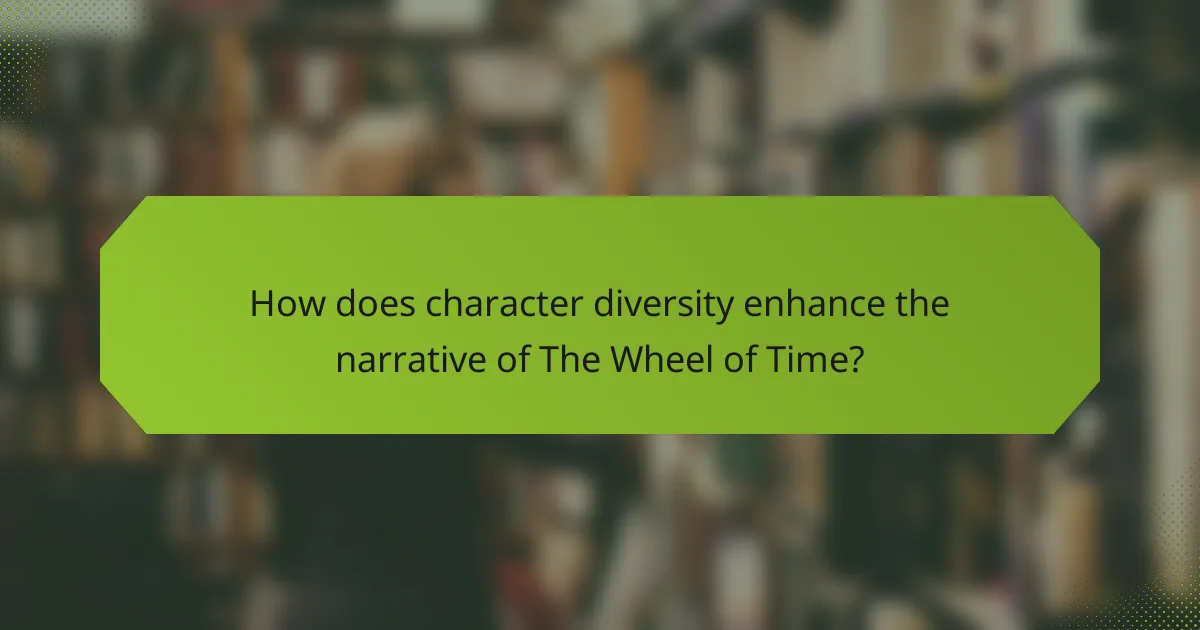
How does character diversity enhance the narrative of The Wheel of Time?
Character diversity significantly enhances the narrative of The Wheel of Time by enriching themes and perspectives. The series features a wide array of characters from various cultures, each contributing unique viewpoints and experiences. This diversity fosters deeper world-building, allowing readers to engage with complex social dynamics and cultural conflicts. Characters like Egwene al’Vere and Mat Cauthon showcase distinct backgrounds that reflect the series’ expansive universe. As a result, the narrative becomes more relatable and immersive, inviting readers to explore the intricacies of identity and power within a richly woven tapestry.
Which characters represent different cultural backgrounds?
The Wheel of Time features characters from diverse cultural backgrounds, enriching its narrative. Key characters include Rand al’Thor, representing the rural culture of the Two Rivers; Egwene al’Vere, embodying the traditions of the Aiel; Mat Cauthon, reflecting the carefree spirit of the common folk; and Moiraine Damodred, showcasing the noble heritage of Aes Sedai. Each character’s background influences their motivations and interactions, emphasizing the series’ commitment to cultural representation.
How are gender dynamics portrayed through character interactions?
Gender dynamics in “The Wheel of Time” are intricately portrayed through character interactions, showcasing a complex interplay of power and relationships. The series presents a diverse cast, emphasizing both traditional and evolving roles within its cultural context. Female characters often wield significant influence, challenging patriarchal norms. For instance, Aes Sedai exemplify female empowerment through their unique abilities and leadership roles. Male characters, like Rand, navigate their identities in response to these dynamics, reflecting societal expectations. This multifaceted representation invites readers to explore themes of equality, conflict, and collaboration across genders, enhancing the narrative’s depth and relevance.
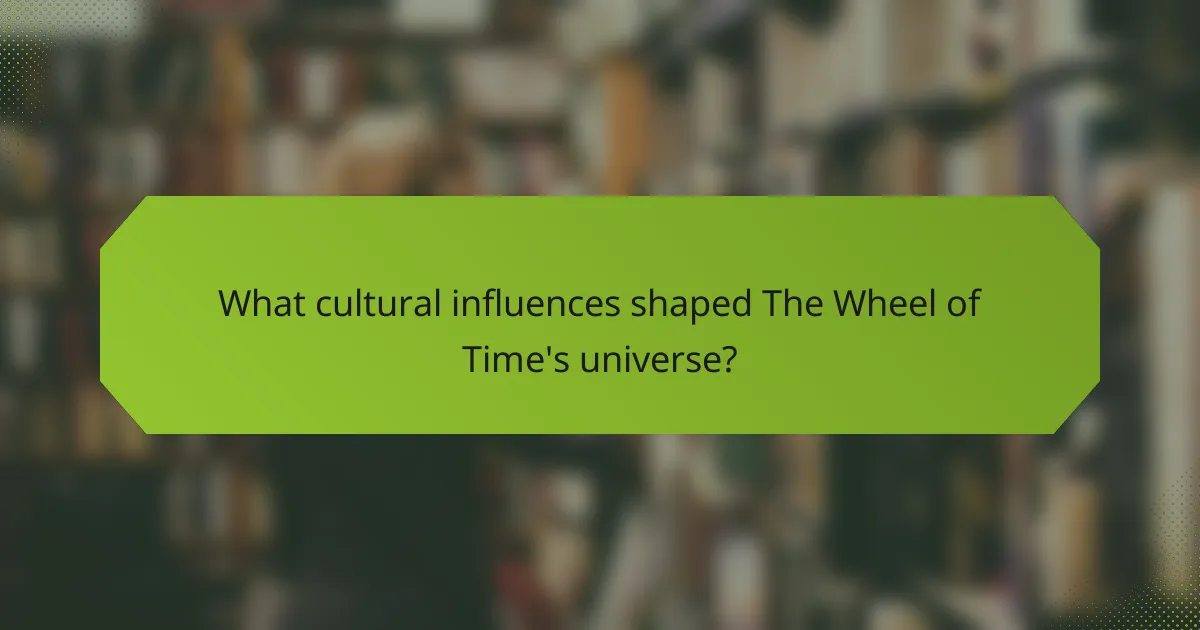
What cultural influences shaped The Wheel of Time’s universe?
The Wheel of Time’s universe is shaped by diverse cultural influences, including mythology, history, and social structures. Robert Jordan drew inspiration from various world cultures, such as Middle Eastern, Asian, and European traditions. This blend creates a rich tapestry of customs and beliefs, evident in the series’ characters and settings. For example, the Aiel culture mirrors aspects of nomadic societies, emphasizing honour and survival. Additionally, the intricate political dynamics reflect real-world historical conflicts, enhancing the narrative’s depth. This cultural amalgamation enriches the storytelling and resonates with readers worldwide.
How do real-world mythologies inform the story’s themes?
Real-world mythologies significantly enhance the themes in “The Wheel of Time” by providing rich cultural contexts. These mythologies shape character motivations, moral dilemmas, and the overarching narrative structure. For instance, the cyclical nature of time in various cultures resonates with the series’ themes of rebirth and destiny.
The diversity of characters reflects a multitude of mythological influences, drawing from global traditions. This amalgamation fosters a deeper understanding of the human experience, showcasing how different cultures interpret concepts like heroism and sacrifice.
Additionally, the series incorporates unique mythological elements, such as the concept of the Hero’s Journey, which aligns with archetypal narratives found across many cultures. This connection allows readers to engage with the story on multiple levels, enriching their experience and understanding of its themes.
Overall, the integration of real-world mythologies not only informs the narrative but also invites readers to explore the complexities of identity, morality, and the human condition within a fantastical framework.
In what ways do historical events influence character arcs?
Historical events shape character arcs in “The Wheel of Time” by providing context for personal growth and transformation. Characters respond to significant events, influencing their motivations and decisions. For example, the struggle against the Dark One reflects broader societal conflicts, driving characters to evolve. Cultural influences from diverse backgrounds enrich character development, showcasing varied responses to shared challenges. This interplay between history and character evolution enhances the narrative’s depth, making it resonate with readers.
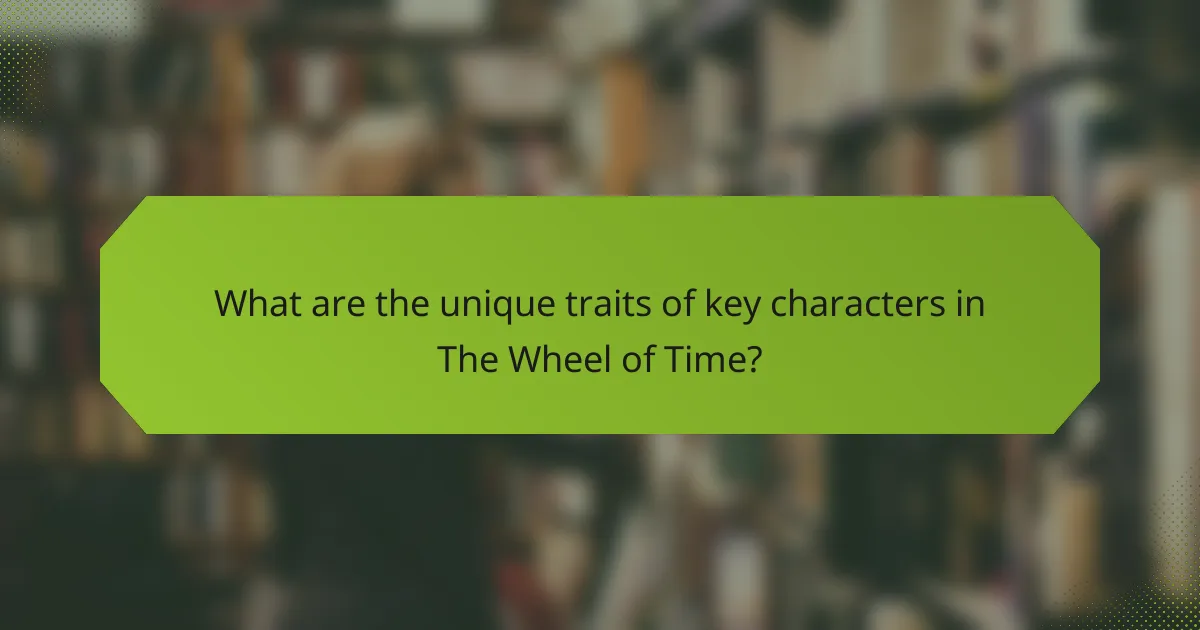
What are the unique traits of key characters in The Wheel of Time?
The unique traits of key characters in The Wheel of Time include their complex backgrounds, distinct motivations, and evolving arcs. Characters like Rand al’Thor embody the struggle between destiny and choice, while Egwene al’Vere showcases resilience and leadership. Mat Cauthon stands out for his luck and strategic cunning, and Perrin Aybara’s connection with wolves highlights themes of duality and identity. These traits contribute to the rich tapestry of the narrative, reflecting cultural influences and diverse perspectives throughout the series.
How does the development of Rand al’Thor differ from other protagonists?
Rand al’Thor’s development is unique due to his struggle with identity and destiny. Unlike typical protagonists, he embodies both the hero and the reluctant leader, facing immense internal conflict. His journey is shaped by the burden of being the Dragon Reborn, which sets him apart from others. Rand’s relationships with diverse characters and cultures further enrich his growth, illustrating the complexity of his character arc. This multi-faceted development contrasts sharply with more straightforward heroic narratives.
What makes Moiraine Damodred a standout character?
Moiraine Damodred stands out due to her complexity, determination, and pivotal role in “The Wheel of Time.” As a powerful Aes Sedai, she embodies strength and intelligence, navigating the intricate political landscape of the series. Her unique attribute is her unwavering commitment to the Dragon Reborn, showcasing her deep sense of purpose. Additionally, her relationships with other characters highlight her emotional depth, making her a relatable figure despite her formidable abilities. This combination of traits contributes to her status as a memorable character within the epic narrative.
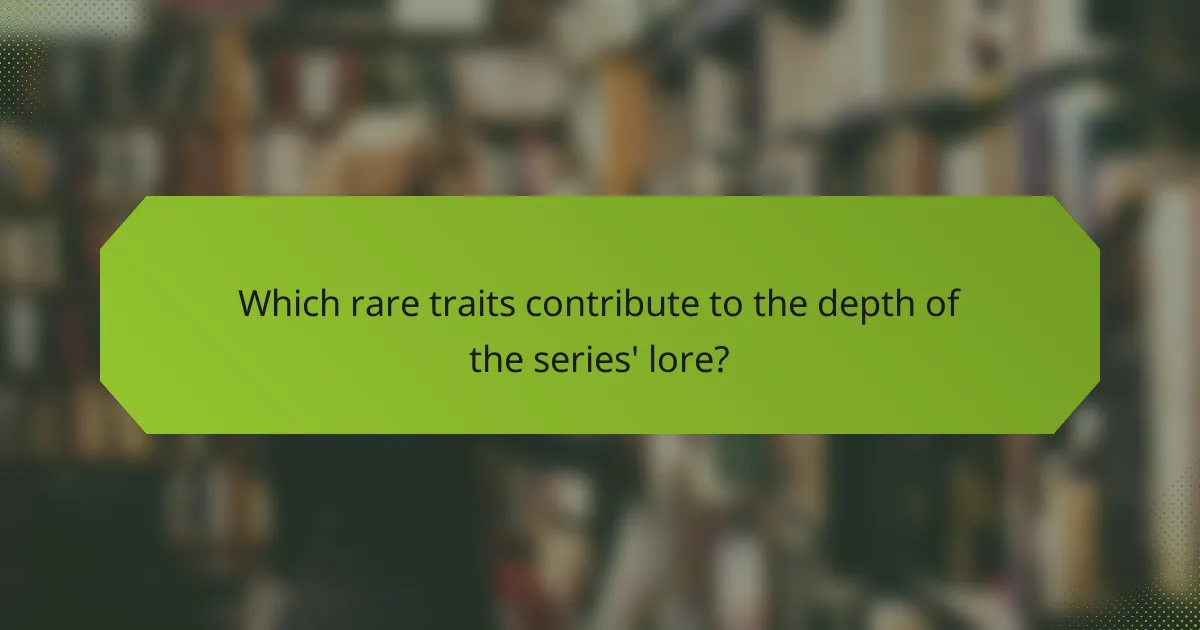
Which rare traits contribute to the depth of the series’ lore?
Rare traits that contribute to the depth of “The Wheel of Time” series include intricate world-building, a complex magic system, and diverse cultural representations. Each character embodies unique backgrounds and motivations, enriching the narrative. The series also features a non-linear timeline, allowing for multiple perspectives and deepening the lore. Additionally, the integration of historical parallels enhances the thematic depth, making the lore resonate with real-world issues.
How do magical systems vary among different cultures within the series?
Magical systems in “The Wheel of Time” vary significantly across cultures, reflecting unique beliefs and practices. For instance, the Aes Sedai represent structured magic through the One Power, while the channelers of the Aiel emphasize a more instinctual connection. Each culture’s approach to magic is influenced by its historical context and social dynamics. The Seanchan employ a rigid hierarchy of power, contrasting with the egalitarian views of the Tuatha’an, who shun its use. These variations create a rich tapestry that enhances character development and plot complexity throughout the series.
What infrequent character transformations occur throughout the story?
Infrequent character transformations in “The Wheel of Time” enhance the narrative depth. One notable transformation is Rand al’Thor’s shift from a reluctant hero to a powerful leader, embodying the unique attribute of immense responsibility. Another example is Egwene al’Vere’s evolution from a village girl to a formidable Amyrlin Seat, showcasing rare leadership qualities. Mat Cauthon’s character also experiences a transformation, as he transitions from a carefree gambler to a strategic military commander, highlighting his unique adaptability. These transformations reflect the epic scope and cultural influences woven throughout the story.

How does The Wheel of Time address themes of power and responsibility?
The Wheel of Time explores themes of power and responsibility through complex character arcs and moral dilemmas. Characters frequently face choices that weigh personal ambition against the greater good. This struggle illustrates the burdens that come with power, especially in a world shaped by prophecy and destiny. For instance, Rand al’Thor’s journey highlights the tension between his desire for control and the consequences of his actions on those around him. The series emphasizes that true leadership requires accountability and self-awareness, reinforcing the idea that power must be wielded with care.
What lessons can be drawn from the struggles of leadership?
Leadership struggles in “The Wheel of Time” reveal essential lessons about resilience, adaptability, and the importance of collaboration. Characters like Rand al’Thor exemplify the burden of leadership, facing immense challenges while growing through their experiences. This narrative highlights that leadership is not solely about authority but also about making difficult decisions and learning from failures. Additionally, the diverse cast reflects various cultural influences, emphasizing the value of different perspectives in overcoming obstacles. Ultimately, these struggles teach that effective leadership requires both strength and empathy, fostering a deeper understanding of collective goals.
How does the series explore the consequences of wielding power?
The series explores the consequences of wielding power through complex character arcs and moral dilemmas. Characters like Rand al’Thor face the burden of leadership, revealing how power can corrupt and isolate. The narrative illustrates the struggle between good and evil, emphasizing that power, while necessary, often leads to unintended consequences. Each character’s journey highlights the diverse cultural influences that shape their understanding of authority and responsibility. This exploration deepens the viewer’s engagement with the themes of sacrifice and the ethical use of power.
What best practices can readers adopt when engaging with complex narratives like The Wheel of Time?
Readers engaging with complex narratives like The Wheel of Time should adopt strategies that enhance comprehension and enjoyment. First, they should familiarize themselves with the extensive lore and character backgrounds, as this series features a vast universe with intricate relationships. Second, maintaining a reading journal can help track character arcs and plot developments, fostering deeper connections with the story. Third, discussing themes and character motivations with others can provide diverse perspectives, enriching the reading experience. Lastly, taking breaks between books allows time to reflect on the narrative’s complexities, ensuring a more immersive journey through the series.
